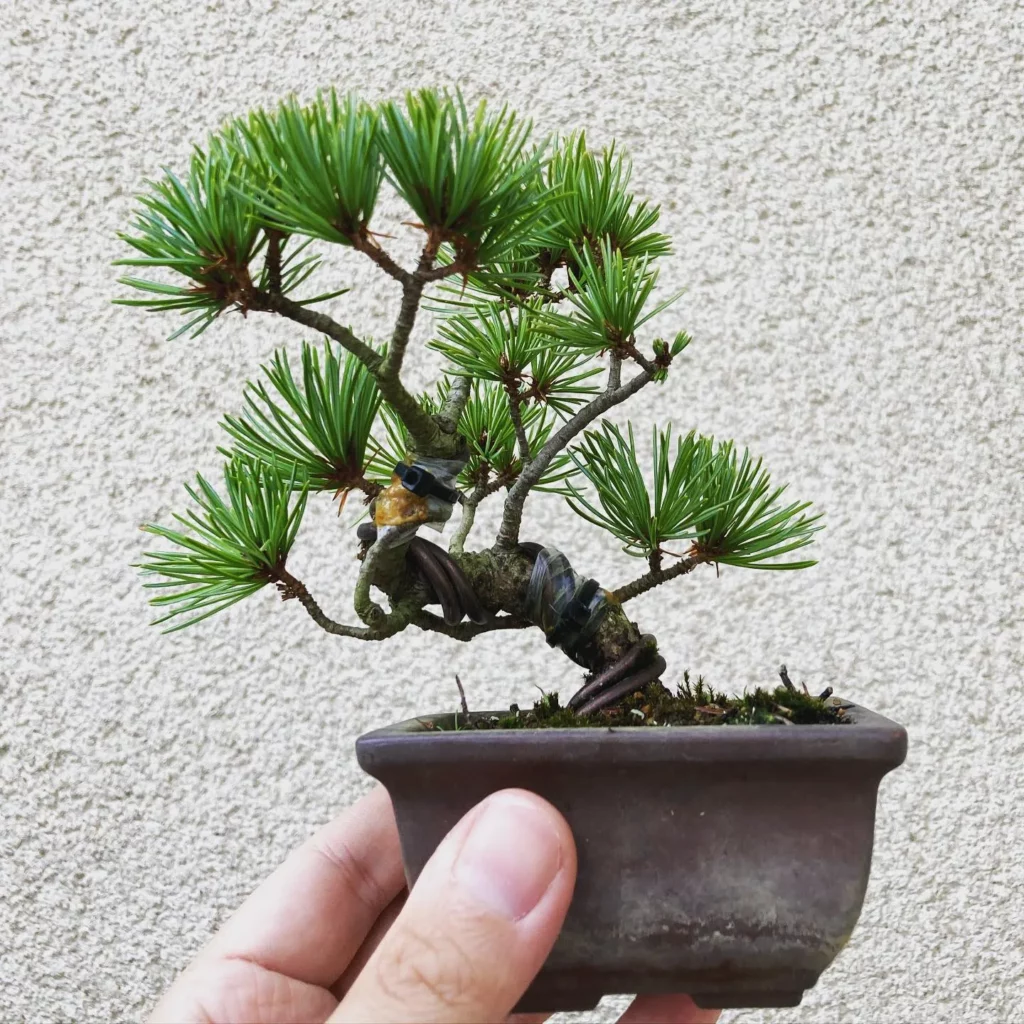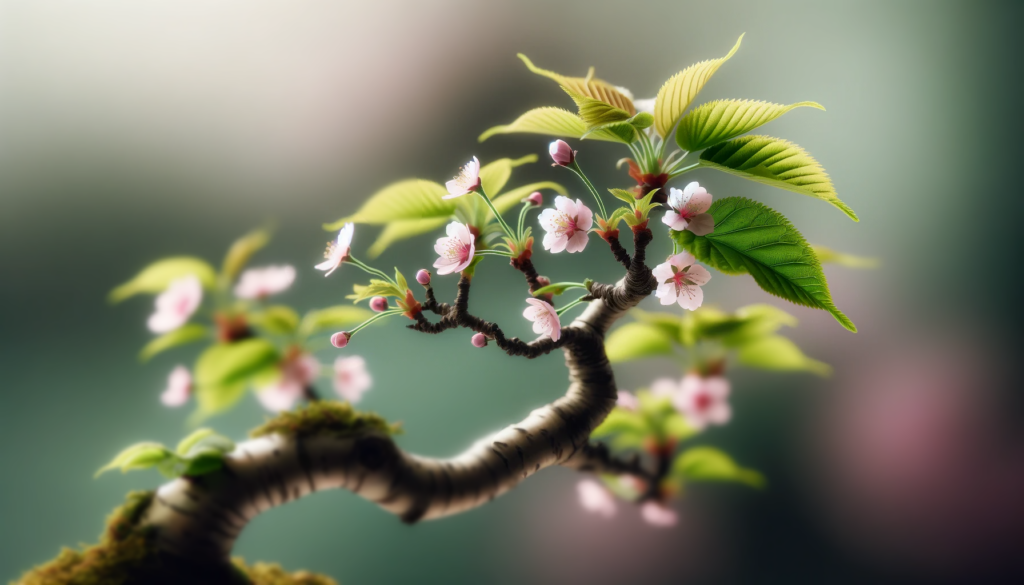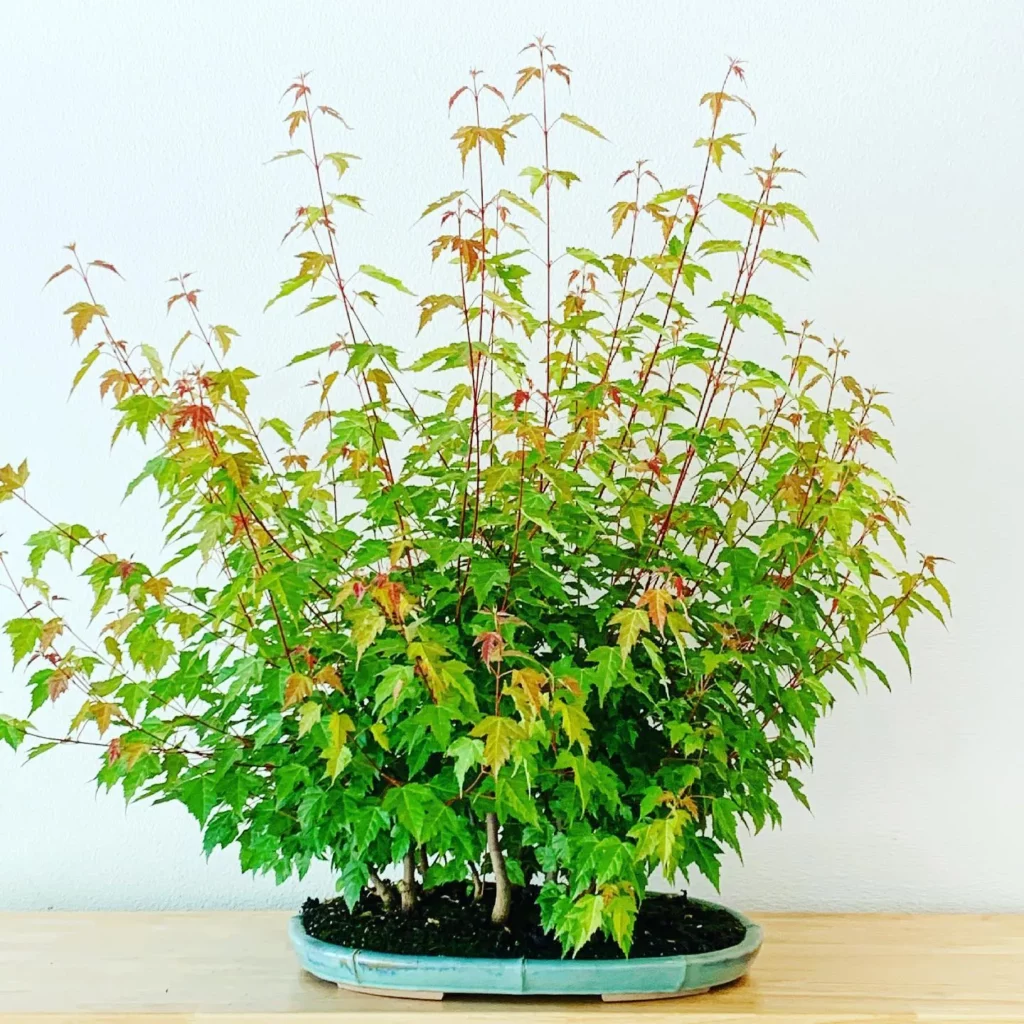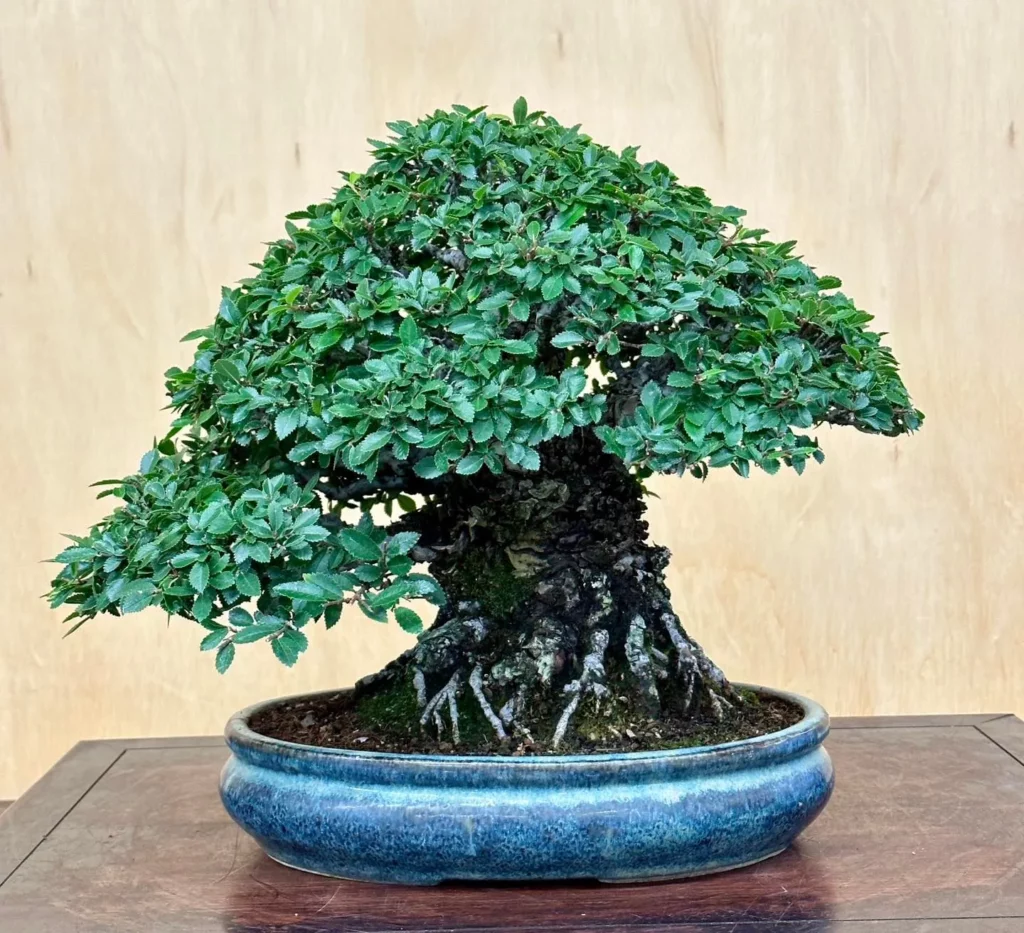Discover the captivating world of Bunjin bonsai, where elegance meets free-form design. Bunjin bonsai, also known as literati bonsai, is a unique style that breaks traditional rules and embraces the beauty of simplicity and abstraction. This art form originated in Japan and has influenced contemporary bonsai culture worldwide.
Bunjin bonsai embodies the spirit of literary men or literati, with a focus on natural traits and an abstract aesthetic. Its irregular shapes and sense of struggle or agony create a resemblance to an abstract painting or a poem. Junipers and pines are popular choices for showcasing the flowing movement of the trunk, while shallow and simple containers complement the elegance of the trees.
To master the art of Bunjin bonsai, techniques such as drastic pruning, minimalism, and creating significant empty spaces are utilized. The result is a bonsai that evokes emotion, tells a story, and invites deeper contemplation. Join the journey of Bunjin bonsai and unlock a new perspective on the art of bonsai.
The Poetic Sensibility of Bunjin Bonsai
The bunjin style of bonsai is often associated with a poetic sensibility. It captures the essence of nature and expresses it through the free-form and abstract elements of the design. Bunjin bonsai trees may appear skimpy and lonely at first glance, but as you observe them closely, their unique qualities and natural traits emerge.

This style encourages a deeper contemplation and appreciation, creating a sense of nostalgia and curiosity. Bunjin bonsai can evoke emotions and feelings beyond what is seen on the surface, allowing you to connect with the tree’s story and journey. The poetic sensibility of bunjin bonsai is further enhanced by the influence of literature, calligraphy, and art in its design.
Understanding the Characteristics of Bunjin Style
The bunjin style of bonsai is truly unique, characterized by a lack of definite pattern or form that allows for a sense of irregularity and disfigurement. This style embodies simplicity and elegance, reminiscent of a refined and artistic expression. While bunjin bonsai trees may appear fragile and struggling, it is important to note that they should be healthy in reality. The shape or form of a bunjin bonsai might indicate a sense of struggle, but it should not reflect the tree’s actual health.
The bunjin style aims to be free, unconstrained, witty, clever, humorous, and unconventional. It can be compared to abstract paintings, senryu, haiku, poems, music, or songs. Each bunjin bonsai has a unique shape or form influenced by wind and weather, resulting in a graceful appearance. It is this sense of irregularity and grace that makes bunjin bonsai truly captivating.
Techniques and Methods of Bunjin Design
Creating a bunjin bonsai involves specific techniques and methods to achieve its desired aesthetic. To cultivate a stunning bunjin bonsai, you need to apply the following techniques:

- Drastic Removal: One of the key aspects of bunjin design is the drastic removal of unnecessary parts and excess branches. This technique ensures that only the minimum necessary elements remain, showcasing the tree’s natural beauty and unique characteristics.
- The Art of Space: Bunjin bonsai is renowned for its emphasis on space. By strategically incorporating significant empty spaces, these bonsai trees evoke imagination and create a sense of tranquility. The deliberate use of empty spaces is what sets bunjin design apart from other styles.
- Controlled Trimming and Pruning: While bunjin bonsai doesn’t adhere to strict shape and form guidelines, it places great importance on controlled and deliberate trimming and pruning. This process helps maintain the tree’s grace and delicacy, giving it an elegant appearance. By carefully trimming and pruning the branches, you can create the desired aesthetic while preserving the tree’s natural beauty.
- Rootage, Trunk Tapering, Size, and Height: In bunjin style, these traditional bonsai considerations are not as crucial as in other styles. Instead, the focus lies more on the overall balance and harmony of the tree’s unconventional appearance. This allows the tree to evoke emotions and tell its own unique story.
- Crafting the Final Form: The final form or shape of a bunjin bonsai is a crucial technique in creating a visually impactful design. By achieving a balance between simplicity and complexity, a bunjin bonsai can captivate viewers and convey a narrative through its unconventional and abstract appearance.
No products found.
History and Influences of Bunjin Bonsai
The bunjin style of bonsai has a rich history originating in Japan during the late Tokugawa shogunate and the early Meiji era. Influenced by Japanese bunjin artists such as Sanyo, Chikuden, Taigi, and Chokunya, this unique style of bonsai emerged from their admiration of Nansoga (Nanga) painting. Nansoga painting, which originated from the Chinese Song dynasty, served as an inspiration for cultivating trees in a similar style.

Bunjin bonsai represented a departure from traditional bonsai values, embracing a more natural and artistic approach. It set the stage for the development of contemporary Japanese bonsai culture, encouraging the expression of bonsai as a living art form. Today, bunjin bonsai continues to have a significant impact on bonsai enthusiasts worldwide, inspiring them to explore new possibilities and push the boundaries of artistic expression.
Suitable Trees and Materials for Bunjin Bonsai
When it comes to creating bunjin bonsai, the selection of suitable trees and materials is crucial to capturing the elegant and free-form essence of this unique bonsai style. Various tree species can be used to create stunning bunjin bonsai, each with its own distinctive qualities that contribute to the artistic expression of the design.
- Conifers: Conifers, such as junipers and pines, are popular choices for bunjin bonsai due to their natural ability to showcase the flowing movement and elegant shapes that characterize this style. The slender trunks and delicate foliage of conifers lend themselves well to the irregular and abstract aesthetic of bunjin bonsai.
- Deciduous Trees: While conifers dominate the bunjin bonsai scene, some deciduous tree species can also work beautifully in this style. Flowering apricot and hawthorn, for example, offer unique flowering displays and interesting branch structures that can be emphasized in bunjin designs. However, it is important to note that deciduous trees require more attention due to their tendency to break and their upward-growing foliage.
- Old and Weathered Trees: In the quest for authenticity and character, old and weathered trees often make excellent candidates for bunjin bonsai. These trees exhibit the sense of struggle, survival, and resilience that are embodied by the bunjin style. Look for trees with interesting trunk movements, unique or abstract qualities, and the potential for refinement through pruning and wiring.
Choosing Containers for Bunjin Bonsai
When it comes to selecting containers for your bunjin bonsai, it’s important to consider the style’s emphasis on simplicity and elegance. The choice of container plays a crucial role in complementing the flowing and irregular shape of the tree, creating a harmonious overall composition.
Shallow round or oval containers are often preferred for bunjin bonsai, as they provide a balanced and natural appearance. These container shapes align well with the organic and free-form design of the bunjin style. The shallow depth allows the tree’s roots to spread laterally while maintaining stability.
Another option to enhance the visual impact of your bunjin bonsai is to use trays. Trays can be particularly effective when incorporating rocks or stones into the overall composition. They offer a broader canvas to create dynamic and captivating landscapes.
No products found.
Plant Positioning
When opting for oval or tray containers, it is common practice to plant the tree somewhat off-center. This deliberate placement creates visual interest and adds an element of asymmetry, aligning with the unconventional nature of bunjin bonsai. The off-center planting can highlight the tree’s movement and bring a sense of dynamic tension to the overall composition.
Avoiding Ornate and Heavy Designs
To maintain the simplicity and elegance of the bunjin style, it is advisable to steer clear of overly ornate or heavy glazed containers. These can distract from the tree’s delicate and refined appearance, overpowering its natural beauty. Instead, opt for containers that have a clean and uncluttered design, allowing the tree to take center stage.
Care and Maintenance of Bunjin Bonsai
Bunjin bonsai, like other bonsai styles, require regular care and maintenance to ensure their health and beauty. However, due to their tall and slender design, there are a few additional considerations to keep in mind.
Firstly, bunjin bonsai can be top-heavy and susceptible to being blown off benches or stands in strong winds. To prevent accidents, it is advisable to provide additional support or tie them in place securely.
Maintaining a relatively sparse foliage arrangement is crucial for preserving the overall elegance and balance of bunjin bonsai. This requires ongoing pruning and trimming of branches as needed to prevent an overly dense or bushy appearance. By carefully controlling fertilization and watering, you can ensure the health and vitality of the tree while maintaining its delicate and refined trunk.
To make it easier for you, here are a few key care and maintenance tips for your bunjin bonsai:
- Provide additional support or tie down your bunjin bonsai to prevent it from being toppled by strong winds
- Regularly prune and trim branches to maintain a relatively sparse foliage arrangement
- Control fertilization and watering to avoid an overly dense or bushy appearance
- Maintain the delicate and refined nature of the trunk while ensuring the tree’s health and vitality
The Artistry of Bunjin Bonsai
Bunjin bonsai is more than just a horticultural hobby – it’s an art form that allows for unique and artistic expression. Breaking away from traditional bonsai norms, the unconventional and abstract nature of bunjin style encourages bonsai enthusiasts like you to push boundaries and explore your creativity.

Similar to the poetic sensibility associated with this style, bunjin bonsai offers a canvas for evoking emotions, telling stories, and engaging viewers on a deeper level. It is through the artistry of bunjin bonsai that you can truly express your inner creativity and captivate with elegance and refinement.
The artistry of bunjin bonsai lies in its ability to achieve a delicate balance between simplicity and complexity. The deliberate use of empty spaces creates a sense of tranquility and allows the viewer’s imagination to roam freely. Each irregular shape and form portrays the beauty of nature in all its organic glory, like a free-flowing brushstroke on a canvas.
As you delve into the world of bunjin bonsai, you’ll discover the endless possibilities for artistic expression. Each tree you shape becomes a masterpiece, unique to your vision and skill. The subtle curves and twists of the trunk, the sparingly placed foliage, and the beauty of negative spaces all come together to create a composition that captures the essence of nature in its most artistic form.
Artistic Expression in Bunjin Bonsai:
- Unleash your creativity and push the boundaries of traditional bonsai aesthetics.
- Portray emotions and tell stories through the unique design and composition.
- Create a captivating balance between simplicity and complexity.
- Deliberately use empty spaces to evoke a sense of tranquility and mystery.
- Express the beauty of nature through irregular shapes and forms.
The Influence of Bunjin Bonsai in Bonsai Culture
The unique style of bunjin bonsai has had a profound impact on the world of bonsai, introducing new perspectives, approaches, and techniques. This art form has inspired bonsai artists and enthusiasts to break free from rigid conventions and embrace the more abstract and poetic aspects of bonsai. The exploration of irregular shapes, the use of negative space, and the incorporation of literary and artistic sensibilities have enriched the overall bonsai culture.
Bunjin bonsai showcases the constant evolution of bonsai as an art form, inviting innovation and interpretation. Its influence can be seen in contemporary bonsai exhibitions, demonstrations, and discussions, where artists are exploring new ways to express themselves. The impact of bunjin style continues to drive the exploration and deepen the appreciation for the art of bonsai in new and exciting ways.
Here are some key ways in which bunjin bonsai has influenced bonsai culture:
- Breaking free from rigid conventions and exploring more abstract and poetic aspects of bonsai
- Embracing irregular shapes and incorporating negative space for a more artistic expression
- Incorporating literary and artistic sensibilities into bonsai design
- Inspiring innovation and interpretation in the bonsai community
- Enriching contemporary bonsai exhibitions, demonstrations, and discussions
The Continuing Journey of Bunjin Bonsai
The artistry and allure of bunjin bonsai continue to captivate bonsai enthusiasts worldwide. Its elegant and free-form design, combined with a poetic sensibility, has firmly established it as a distinctive style within the bonsai world. As more artists delve into the realm of bunjin bonsai and push the boundaries of its aesthetic, the journey of this unique art form evolves and unfolds.
Bunjin bonsai proves to be a constant source of inspiration, as its simplicity and unique expression resonate with bonsai lovers. By challenging traditional norms and experimenting with unconventional designs, artists breathe new life into the future of bunjin bonsai. Each exploration leads to fresh possibilities and interpretations, ensuring the continued relevance and vibrancy of this remarkable style.
Communities of bunjin bonsai enthusiasts flourish at bonsai exhibitions, workshops, and online platforms where knowledge and insights are shared freely. This sense of community fosters a deep passion for bunjin bonsai and cultivates a desire to explore its potential further. Young and experienced enthusiasts alike come together, driven by a shared appreciation for the artistic freedom and unconventional beauty that bunjin bonsai represents.
Moving forward, the future of bunjin bonsai lies in the hands of those who cherish its artistic journey. By embracing this unique approach to bonsai, enthusiasts can continue to shape and elevate the art form, carving out new paths and inspiring future generations. The ongoing evolution of bunjin bonsai promises an exciting and dynamic future where the allure of elegance, simplicity, and artistic expression converge.
After this check out our other articles on:
FAQ
What is bunjin bonsai?
Bunjin bonsai, also known as literati bonsai, is a unique and elegant style of bonsai with a free-form design. It breaks traditional bonsai rules and focuses on simplicity, natural traits, and an abstract aesthetic.
What are the characteristics of bunjin style?
Bunjin bonsai is known for its lack of definite pattern or form, simplicity and elegance, and a sense of struggle or agony. It aims to be free, unconventional, and evokes a poetic sensibility.
How do you create a bunjin bonsai?
Creating a bunjin bonsai involves techniques such as drastic pruning, minimalism, and creating significant empty spaces. The final form or shape is crucial to create a simple yet impactful design.
What is the history and influence of bunjin bonsai?
The bunjin style originated in Japan and has influenced contemporary bonsai culture. It emerged during the late Tokugawa shogunate and the beginning of the Meiji era, influenced by renowned Japanese bunjin artists and Nansoga (Nanga) painting.
What trees and materials are suitable for bunjin bonsai?
Suitable materials for bunjin bonsai include conifers and rugged deciduous trees. Junipers and pines are especially popular choices for their ability to showcase the flowing movement of the trunk.
How do you choose containers for bunjin bonsai?
Containers for bunjin bonsai are typically shallow and simple, avoiding overly ornate or heavy designs. Shallow round or oval containers are often preferred to provide a harmonious balance with the tree’s flowing and irregular shape.
How do you care for and maintain bunjin bonsai?
Bunjin bonsai require keeping the foliage sparse and ensuring stability due to their top-heavy nature. Regular pruning, trimming, and controlling fertilization and watering are essential to preserve their elegance and delicacy.
What is the artistry of bunjin bonsai?
The artistry of bunjin bonsai lies in the balance between simplicity and complexity, the deliberate use of empty spaces, and the portrayal of nature’s beauty through irregular shapes and forms. It offers a canvas for evoking emotions, telling stories, and engaging viewers on a deeper level.
How has bunjin bonsai influenced bonsai culture?
Bunjin bonsai has introduced new perspectives, approaches, and techniques to the world of bonsai. It has inspired bonsai artists and enthusiasts to break free from rigid conventions and embrace the art’s more abstract and poetic aspects.
What is the continuing journey of bunjin bonsai?
The journey of bunjin bonsai continues to evolve and unfold as artists experiment with its aesthetics and push the boundaries of its design. Bonsai enthusiasts gather to share knowledge, insights, and creations, fostering a sense of community and passion for this distinct style.




